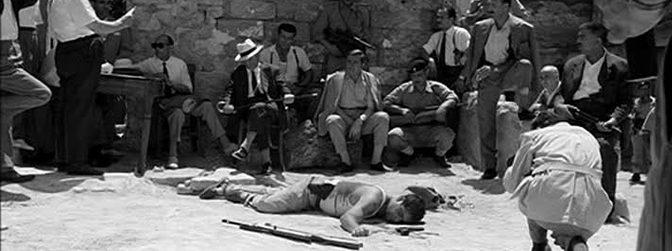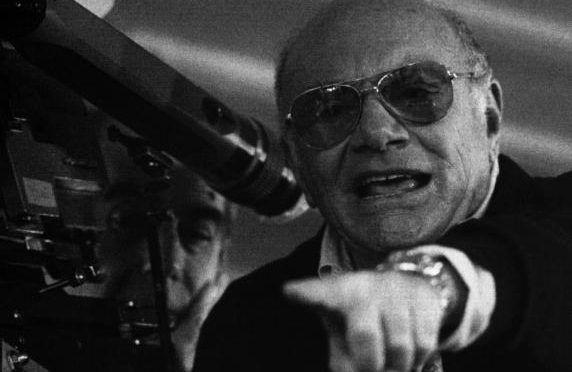 Salvatore Giuliano’s status in Italy’s dark-hearted south is ambiguous and legendary – black marketeer, bandit, separatist hero and murderer of innocents. In Francesco Rosi’s film, the societal forces unleashed in Italy after World War II converge in the elusive figure of the title.
Salvatore Giuliano’s status in Italy’s dark-hearted south is ambiguous and legendary – black marketeer, bandit, separatist hero and murderer of innocents. In Francesco Rosi’s film, the societal forces unleashed in Italy after World War II converge in the elusive figure of the title.
Giuliano himself is mostly absent from the film. His presence is, however, felt throughout. Never giving instructions, and never seen to be committing a crime, his complicity is questioned as much as his true nature. Scenes are often shot from above, placing the viewer at a vantage point which is simultaneously objective, judgemental and, as we see events from Giuliano’s mountain hideout, makes us his accomplice.
Rosi brilliantly combines documentary, Neo-realism, crime genre and elements from the real life investigation …
The film opens with the supposed scene of Giuliano’s death. An official’s description of the circumstances of the shooting acts as an assertion of the ‘official’ version of events. In these opening moments Rosi has already involved the audience in the investigation, employing here for the first time his cine-inchieste techniques, the camera serving as the investigative tool. Rosi brilliantly combines documentary, Neo-realism, crime genre and elements from the real life investigation into his unique aesthetic form, obscuring any notion of a definitive truth in the process.
Landscape, language and nationalism are often bound together in a sentimental justification of political aims. Rosi is aware of this and conveys it by romanticising the arid and hostile hills of Montelepre, as well as the actions of the bandits – scenes of violence are beautifully choreographed set pieces, filmed in noirish tones. These are reminiscent of American crime thrillers which flooded the peninsula after World War II, and sit at odds with the documentary elements of the films.
… the villagers […] reacted with genuine terror and hysteria when gunshots began to ring out …
Whether this is Rosi’s decision or not is open to question. SALVATORE GIULIANO was filmed under the watchful eye of the local population, who provided almost all of the cast and who were also participants in the actual events. In the scene of the Portella della Ginestra May Day massacre, the villagers, many who remembered the massacre vividly, reacted with genuine terror and hysteria when gunshots began to ring out.
For all that it is filmed in black and white, this is where clear delineations end. Unlike films typical of the crime genre there is no justice served, no solution to the crime. Morality is a morass. Rivalry and cooperation occurs between traditional adversaries. Who is on the side of the law? Who possesses the moral authority?
This is not invention but interpretation of the truth. There is a function for us as the audience and we are to perform our civic duty. Rosi’s film is not didactic but aims to be engaged, participatory. It is not just a demand he places on the audience, but also a demand he puts on himself.
SALVATORE GIULIANO launches the CFF Rosi season today, Wednesday 19th September at 15:00
httpvh://youtu.be/nVZbipz5zLo

